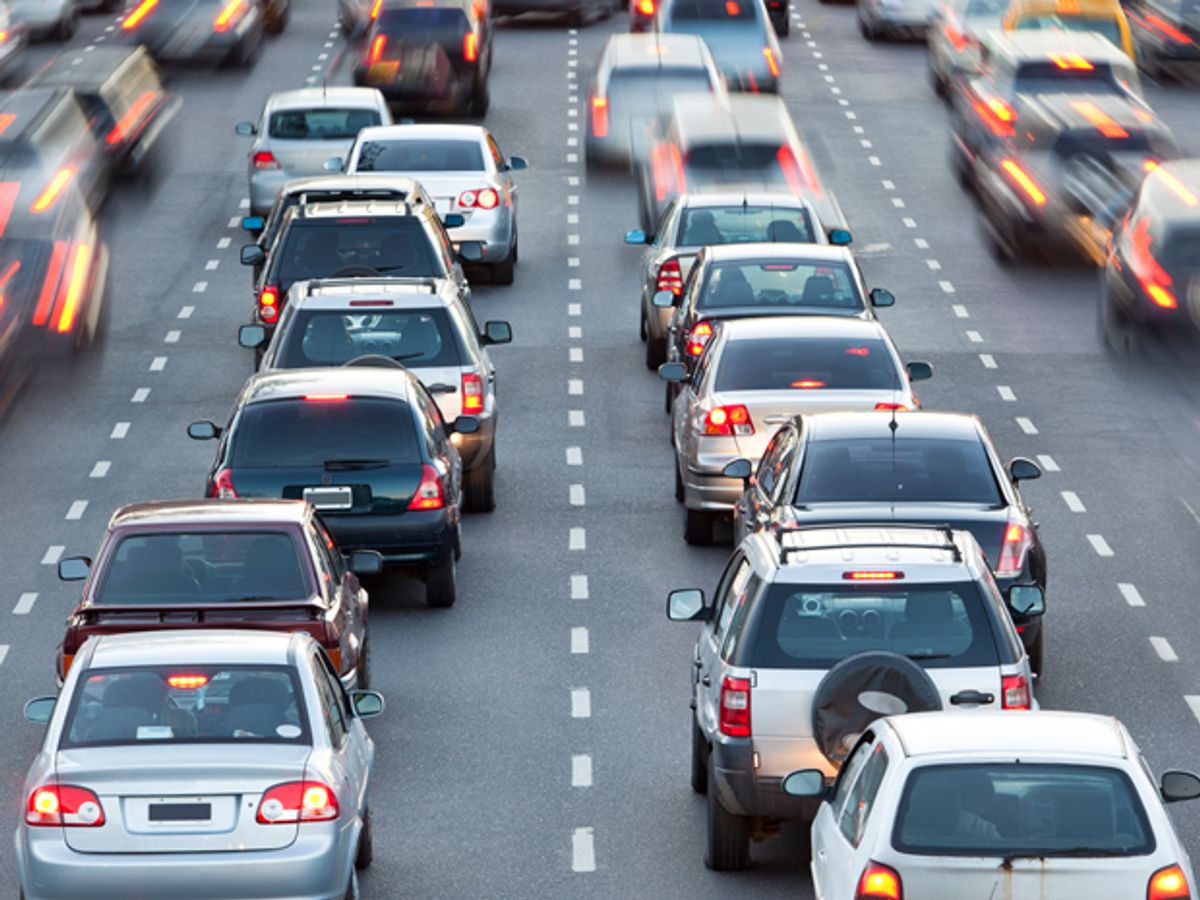Usually, there’s a tangible reason why traffic on highways sometimes comes to a halt. Like, construction, or an accident. Or people slowing down to stare at said accident. But even after the accident (or whatever it was) is long over and cleared up, the traffic jam still exists. And sometimes, traffic jams form for absolutely no reason at all: you’re driving on the highway, traffic slows to a crawl, and then speeds back up again with no explaination.
The reason that traffic jams persist even when the cause has been removed is easy to understand (especially if you watch Alan Alda’s 1998 explanation [Episode 904, starting at 32:45]): When traffic stops, the cars coming up from behind usually have to stop faster than the cars at the head of the jam can accelerate. This causes a knot of stopped cars that propagates backwards along the highway, which can’t be resolved until the volume of cars decreases to the point that there are fewer cars coming up behind the knot than are exiting at the front. This may take a while to happen naturally, especially during rush hour.
But we can fix it, if we all work together. And there is, of course, an app for that.
Smoover is based on the thesis research of Erwin Walraven at Delft University of Technology, the Netherlands. The algorithm he developed can use real-time road sensor and vehicle data, along with road characteristics, to determine what speed limits to set and where to keep traffic flowing at an optimal speed. While the app can certainly do its best to help restore traffic flow once a jam has already occured, it's best at preventing traffic jams from forming at all.
The speed limits suggested by the Smoover app are different than even adaptive speed limit signs that some highways have already, because Smoover isn’t designed to make driving safer, just more efficient. However, by keeping traffic moving and preventing situations where drivers are forced to brake sharply, the app does manage to decrease accidents as well.
Smoover is currently in use on a relatively short highway in the Netherlands. Simulations based on actual traffic flow have shown that the Smoover can potentially reduce aggregate vehicle hours spent on the road by nearly 8 percent if 20 percent of drivers obey the app’s suggestions. If in some glorious utopian future, 100 percent of drivers do what Smoover tells them to do, vehicle hours could be reduced by almost 20 percent. And speaking of glorious utopian futures, this is the sort of thing that autonomous cars will excel at, since they can talk to each other and follow all of these rules dynamically.
While the technology underlying Smoover could be readily adapted to other locations and apps, its success depends on a critical mass of users actually bothering to do what the app suggests. Walraven knows it’s an issue, but he “didn't do any research on the behavioral aspect of drivers,” because his primarily interest was in the algorithms themselves. That's legit. Here in America, where driving tends to be combative, we’re wondering whether a philosophy of “everybody going a little bit slower can result in everybody going a lot faster” would ever really stick with drivers, no matter how grounded in science it is.
Evan Ackerman is a senior editor at IEEE Spectrum. Since 2007, he has written over 6,000 articles on robotics and technology. He has a degree in Martian geology and is excellent at playing bagpipes.



